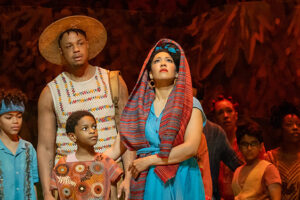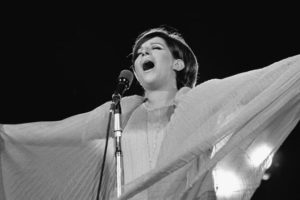

As with most of the Mexico City documents, it sounds like it was recorded with two Dixie Cups and a piece of string, but we are so very lucky to have it at all.
Simionato reigned word-wide over the Verdi mezzo repertoire, including a brief but memorable stay at the Met, until her retirement in 1966 (she lived to 100, leaving this world in May 2010) is here at her smoldering, sumptuous best.
Also with a worldwide reputation, “Pipo” (Di Stefano) was a Met mainstay from his 1948 debut as il duca du Mantua through a 1956 Cavaradossi, followed only by one legendarily disastrous attempt at Les contes d’Hoffmann in 1965.
Before Maria Callas and/or Tulio Serafin and/or Herbert von Karajan (take your pick: feel free to mix and match) forced his lovely voice into Un ballo in maschera, Don José, Puccini’s des Grieux, and – most disastrously – Manrico, he displayed the technique of a superb, light, lyric tenor.
Of the 1949 Met New Year’s Eve broadcast of Faust, Sir Rudolf Bing said in his memoirs, “The most spectacular single moment in my observation year had come when I heard his diminuendo on the high C in “Salut! demeure” in Faust: I shall never as long as I live forget the beauty of that sound.”
Di Stefano, meaning well, coaxed Callas out of a depression and retirement for a worldwide tour in the mid-1970s in which both proved they still had the musical commitment and intention to offer superb performances, but sadly lacked the vocal resources to fulfill their commitments. (I attended their first USA concert in Philadelphia in 1974)
While Callas soon gave up – on art, music, and life – Di Stefano struggled until 1992, making his farewell as Altoum in Turandot in 1992. After a series of health problems, he died in 2008 at age 86 in his home near Milano.
Mascherini, a student of Titta Ruffo and Riccardo Stracciari, had a brief Met career consisting of five roles within six weeks between 1949 and 1950 with the company’ stars, but was mainly a highly-regarded La Scala regular for many seasons beginning in 1940.
Siepi most notably made his Met debut at age 26 on Rudolph Bing’s first opening night in 1950 as Filippo II in Don Caro and sang nearly 500 performances there until his final Don Basilio in Il barbiere di Siviglia with Marilyn Horne and Hermann Prey in 1973, having first sung the role with Lily Pons and Giuseppe Valdengo in his debut season. Not only a master of the Italian and French repertoire, Siepi delivered a stunning series of performances in his only German role, Gurnamenz in Parsifal, in the 1970 new production, hailed by critics as “revelatory.”
His final performance was as Oroveso in Norma in Vienna in 1994. One of the Met’s all-time favorite artists, he died at 87 in 2010.























Comments